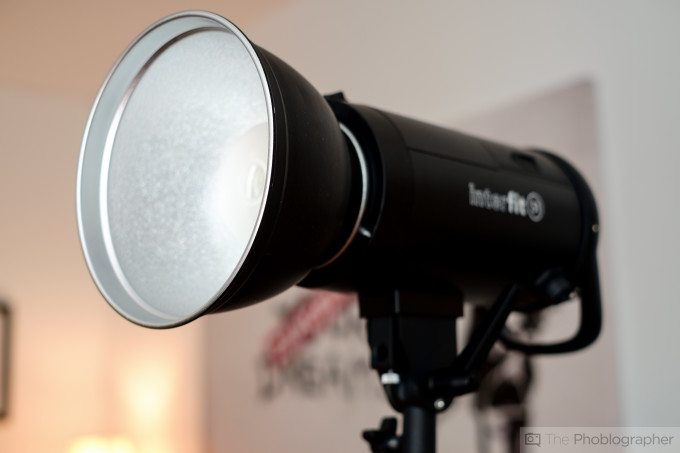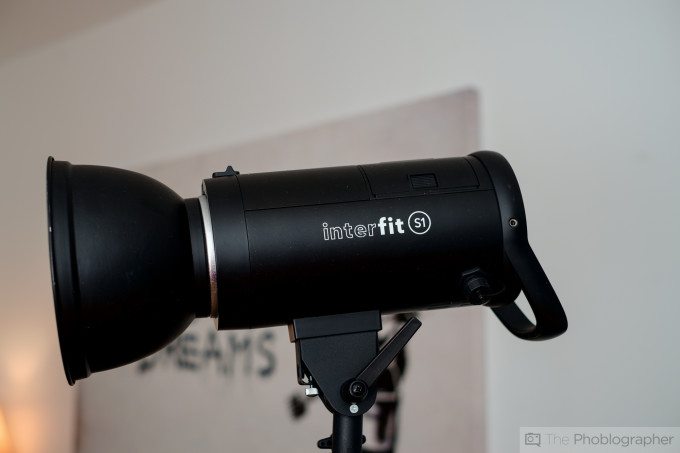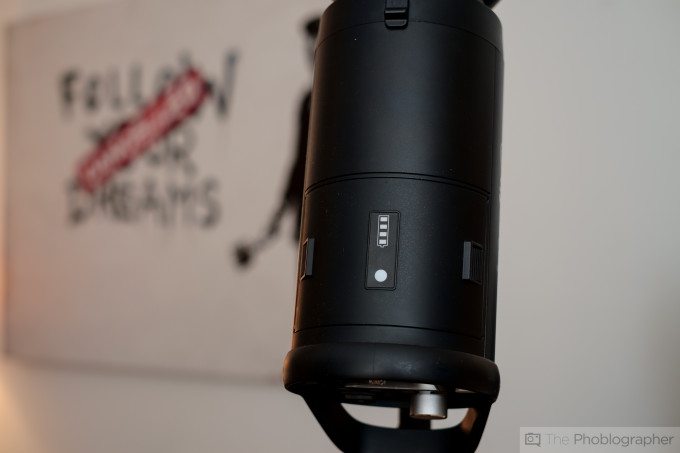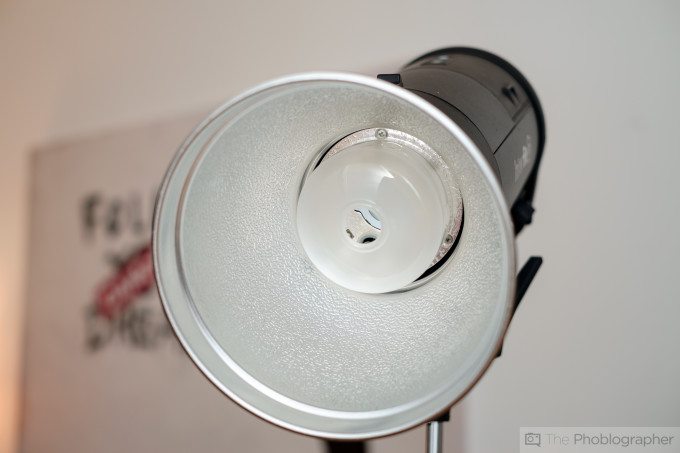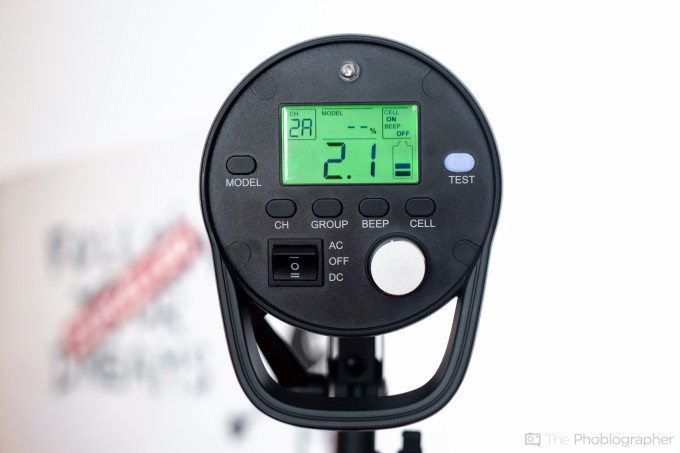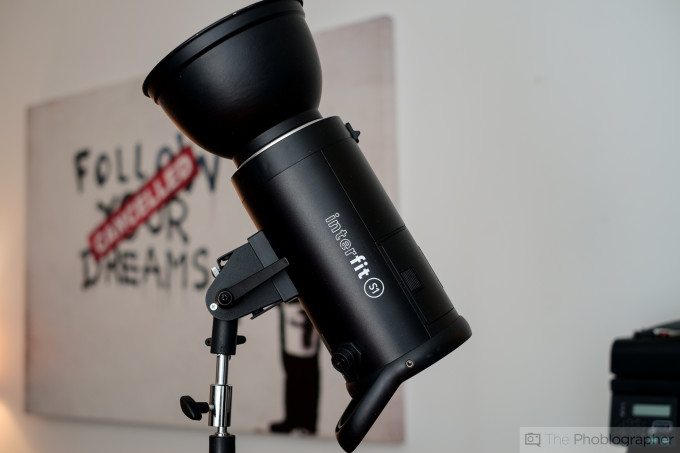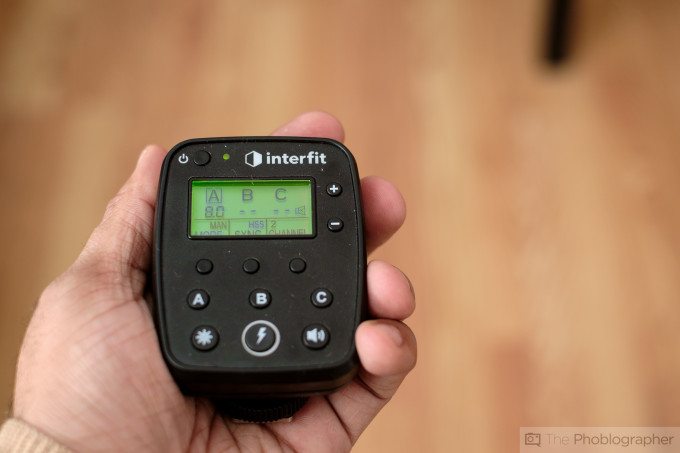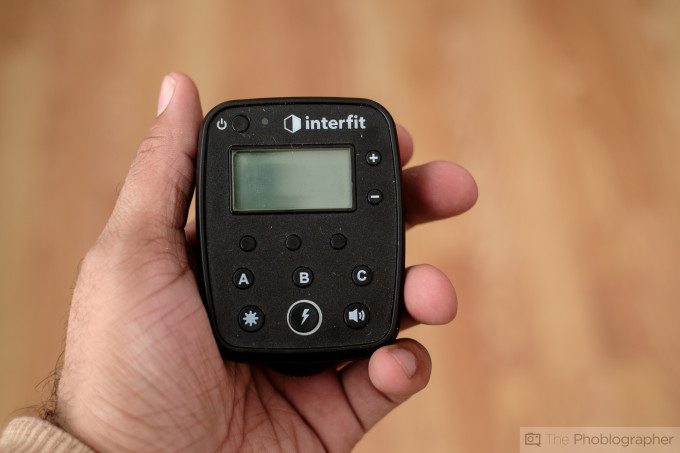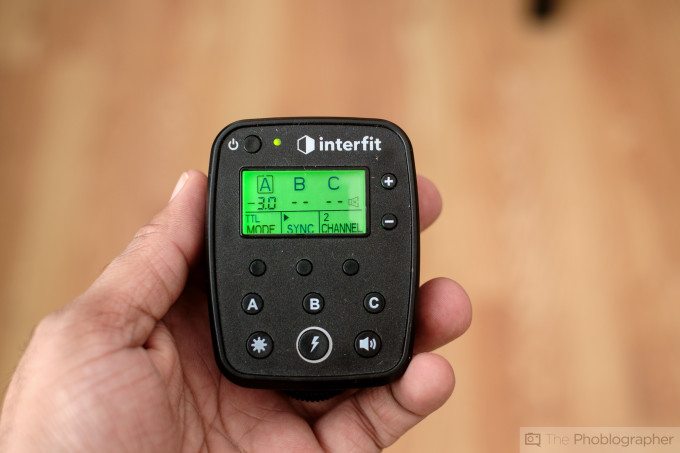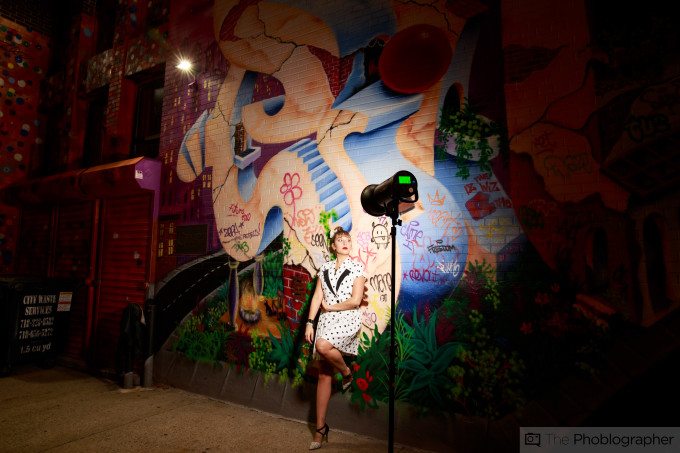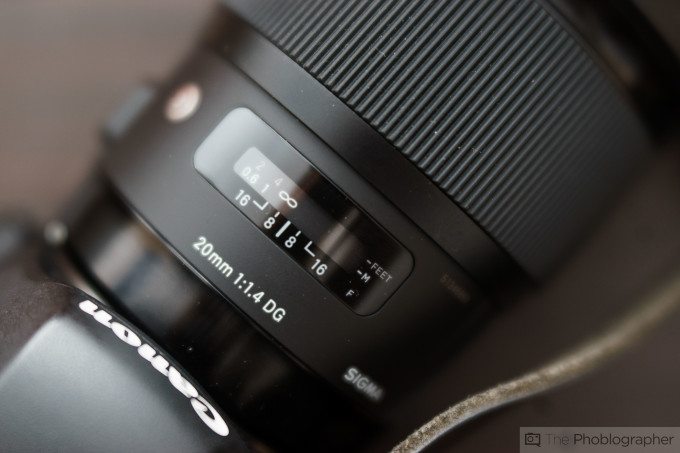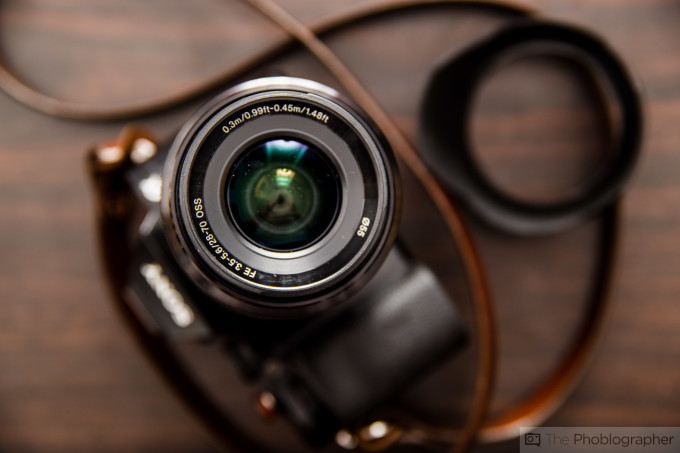Last Updated on 12/11/2015 by Chris Gampat
When you look at the TTL Monolight market, you’ve got Profoto, Phottix and the latest option is the Interfit S1. Interfit hasn’t been a household name like Profoto, Phottix, Bowens, Elinchrom or Paul C Buff, but with the S1 we get the impression that the company wants to do more with what they have. Interfit is trying to give strobists almost every feature that you can get with Phottix and Profoto, but at a more affordable price in the S1.
Typically, that comes with tradeoffs. As of the publication of this review, those tradeoffs involve reliability issues that Interfit says they’re working on. But the rest seems solid.
Pros and Cons
Pros
- Affordable monolight that provides TTL light transmission for Canon and Nikon DSLR systems
- High speed sync actually works and works well
- Pretty good build quality on the outside
- Simple to operate, much more so than Profoto and Phottix when dealing with the remote.
- Battery that integrates into the design
- Modelling lamp stays on for a while
- Pretty darn fantastic battery life. Better than Phottix and on par with Profoto.
Cons
- Minimum power output is 2.0; which means that you either have to stop your lens down, use light modifiers, or find another way to use that excessive light. It can make blending light with ambient lighting tougher to do at times.
- Reliability issues that stopped the flow of many shoots involving models
- Transmitter eats battery life even when it’s off.
- High speed sync only works with the flash set to manual mode.
- 5,700K color temperature pushes the camera to go for a warmer balance accordingly when in auto white balance mode. The Indra 500 is 5,500K and the B1 is 5,600K.
Gear Used
The Interfit S1 monolight was tested with the Canon 6D, Tokina 24-70mm f2.8, Zeiss Milvus 50mm f2, and the Sigma 35mm f1.4 Art lens. It was triggered using Interfit’s own trigger.
Tech Specs
Specs taken from the B&H Photo listing for $999.99.
| Maximum Watt/Seconds | 500Ws |
| Wireless Range | 300′ (100 m) |
| Guide Number | 160′ (48.7 m) @ 9.8′ (3.0 m), 100 ISO |
| Flash Variability | 7.0 Stops (2.0 to 8.0) in 1/10 stop increments |
| Recycle Time | Maximum: 3.0 sec. |
| Flash Duration | 1/1000 – 1/9000 sec. min/max power |
| Color Temperature | 5700 K +/-100 K |
| Modeling Light | 10W LED |
| Modeling Light Control | Off, 50%, 100% |
| Flash Sync | Normal: 1/250 sec. High-Speed Sync: 1/8,000 sec. |
| Wireless Remote | Built-in Receiver Optional Interfit TTL-Canon/Nikon 2.4 GHz Remote |
| Triggering | Wireless remote, sync cord, IR/optical |
| Operating Voltage | 100-240 VAC, 50/60 Hz Included battery |
| Battery Type | 4500 mAh lithium-ion 350 full-power flashes in Manual mode 400 full-power flashes in HSS mode |
| Battery Charge Time | 3.0 hours with included multi-voltage charger |
| Fan Cooled | Yes |
| Auto Dump | Yes |
| Dimensions | Length x Diameter: With Dome and Handle: 13.4 x 5.1 (34 x 13 cm) |
| Weight | 6.3 lb (2.85 kg) including battery |
Ergonomics
The Interfit S1 is a monolight that looks like the Profoto B1 in some ways; but also has big differences. The biggest one in terms of functionality has to do with the need for adding an umbrella reflector. Some may like this, others may not. Personally, it works for me either way and I love shooting with nothing else but umbrella reflectors.
Near the back of the top of the Interfit S1 you’ll find the battery. This battery can be easily detached and tells you details like how much juice is left. As you can see, it’s almost a seamless integration with few visible lines.
The front of the monolight has this bulb with a frosted cover. To protect it, you should use the umbrella reflector or put the actual plastic cover provided with the flash. Yes, I’ve indeed seen these break before, but not with an Interfit flash.
The back of this monolight has a giant LCD screen with all the normal buttons plus the big dial. It’s not the toughest to operate (that award goes to Elinchrom) but you’re best off using the transmitter.
Build Quality
Many aspects of the Interfit S1 are built very solid. The knob for controlling the light, the buttons, the attachment of the umbrella reflector, and the handy grip put at the end of the light work and function well. While this may be so, Phottix and Profoto both have options that feel better. However, Interfit has Phottix beat with the battery fitting seamlessly into the design. Eliminating the need for slinging a battery pack around is really liberating.
Where I feel this light could have improved on its build has to do with the standard screw used to affix it to a light stand or grip gear. Profoto, Paul C Buff and Phottix never give me trouble but toting around my light stand with the Interfit S1 attached required actually holding the stand and the grip at the end of the light–lest the light ended up turning around and potentially falling off. Indeed, there were at least two times where the light turned on the stand. For a reviewer, that’s a big reason to panic.
The transmitter is also built very well and feels great in the hand. However, it’s got one really big problem: even when the transmitter is off it will drain batteries. My Interfit rep experienced the same thing and from my knowledge the company is working on a firmware update to fix this issue. Sooner or later, this won’t be a problem anymore. But at the publication of this review, it’s a crippling issue unless you have lots of AAA batteries on hand.
To be specific here, I needed to change the batteries after every two times I used the trigger. On average, I used the trigger twice a day for 14 days.
One of my biggest problems with the flash has to do with what I believe to be an inherent design flaw. To fully explain this, I need to walk you through a typical shoot with a model. What I do, and many other photographers do is start shooting the scene and subject with the model in a particular pose. As the shutter goes off, the model changes the pose up a bit to give a variation in the shoot. So that means that the pace is quite literally:
- Discuss and demonstrate the pose
- Pose
- Make sure everything is perfect
- Shoot the first image. If everything works out the way you want, then move on and keeping shooting. If not, modify and start back at previous step.
- Continue to shoot a frame
- Model changes pose
- Shoot
- Model changes pose
- Shoot
- Model changes pose
- Shoot
This process can continue on for many, many frames. So what that means is that a monolight needs to be able to recycle quickly, not overheat, and keep up the pace. This is one of the reasons why the recycle beeping sound is so imperative to many photographers–it tells you when you can continue to shoot. When you’re in the zone, a two second recycle time can feel like an eternity.
Even when the recycle beep goes off though, sometimes problems occur with this monolight. In an email to Interfit telling them about this problem, they stated that they only encountered this issue when stress testing the unit. After a while, the unit would continually beep and I’d need to turn it off for a bit, turn it back off, and continue to shoot. If this happened once a month or every now and then: fine, I get it. But this happened at least nine times in the period of a couple of hours on my first shoot–causing me to troubleshoot the light, apologize to my model, and waste time.
Not cool–not the slightest bit cool. But to be fair, this problem didn’t happen with product shoots or food photography–at the same time that’s a significantly slower process.
This isn’t the only reliability problem that occurred. When shooting, sometimes the light wouldn’t go off and instead it would take a while and then pop off twice in a row. This problem also happened many times during my first night shooting with the light. Interfit wasn’t able to recreate the scenario, but they said that the unit’s capacitors were probably automatically dumping the power. To ensure that it wasn’t radio interference, I shot on at least four different channels but the problem still occurred. It wasn’t the slave cell either because no other lights in the area (street lamps) could have done that. This problem didn’t happen again; and my belief is that the issue had to do with the cold night that I shot on.
Lastly, my other major problem had to do with the flash sometimes not syncing up with the camera when the shutter went off. Interfit knew about this problem and provided a fix for it via firmware. Unfortunately, at the time of my review it was only available using Windows machines and not for Apple Mac users.
Ease of Use
When the light is being operated by the trigger, you just need to put it in your hot shoe and shoot for the most part. Controlling the light from your trigger is incredibly simple–more so than both Profoto trigger and the Phottix Odin–though operation of the physical light itself is simpler with both Profoto and Phottix.
The light has different groups and radio channels that can all be used. You can turn off specific groups with no big problems and by using the buttons accordingly marked. By pressing these buttons in the right positions, you can also change the settings such as going from TTL manual, first curtain sync, second curtain sync, HSS, and more.
Personally, I love taking monolights and flashes out and testing them with just the umbrella reflector to see just how well they can perform without the aid of a modifier. Phottix and Profoto are both solid, and for the most part the Interfit is too–except that the Interfit lags behind with yet another problem. The Interfit S1 can only power down to 2.0, which means that the power levels can’t go lower than that. So what does that mean in practice?:
- You can’t shoot with a fast prime lens barely wide open without using a light modifier. Why would you do this? It gives extra sharpness to a scene or subject–so essentially for the specular highlights. What this results in is extra pop in your image that can make a subject’s eyes really pierce into your soul.
- Blending ambient light and flash output can be tougher to do in real life situations.
- You sometimes need to stop the lens down to kill the flash output depending on the situation.
If you’re shooting in a studio, this isn’t a big problem because you’re most likely using a light modifier. But the Interfit S1’s design, which emphasizes the lack of needing to be tethered to a wall plug, begs to be shot on location.
Despite the fact that you can’t dial the flash power down all the way, Interfit should be commended for incredible TTL flash output. It’s arguably a bit better than Profoto’s and about on par with Phottix’s–which I’ve always felt has the best TTL output for any flash manufacturer when it comes to the Canon TTL system. The image above looks like it was done with all natural light, but it was actually done using flash positioned camera left.
Really nice, huh? This was done at 2pm in NYC while the sun was still very high up and very bright.
This monolight is also capable of doing high speed sync in manual mode. It works well enough, but I prefer the results I’ve seen from Phottix a bit more. Of course though, it could also just be the way I was using it.
Remember to bring a light meter with you if you plan on using HSS.
Image Quality
Specularity
Reliability issues aside, what we all care about here is the image quality. Generally, it’s good–but the color temperature tends to make the camera render warmer images than I’m typically used to when shooting with a flash. So there is extra color work that’s needed on my end–especially in mixed lighting situations and I know how to deal with those very well not only in camera, but in post too.
The light that this monolight outputs is very specular and helps your camera and lens deliver lots of beautiful details in the scene–and when it works you generally won’t have much of any issues. In fact, you’ll be thoroughly surprised by the extra details it can bring out in the scene. Though it can be used with just the umbrella reflector, I preferred it to be used with a seven foot parabolic umbrella because of the power limitation issues. The umbrella had a white inside and helped render the colors to work a bit better with the 6D.
Color Consistency
Besides the warming color issue, there is one thing that you can count on–and that’s color consistency. The colors here had a very small variation of only one or two degrees at the worst–which I was incredibly impressed by and you can possibly even blame that on the changing light in the environment. However, it’s still not Profoto or Paul C Buff’s color consistency with the Einstein E640. At least that will make the post-production process easier despite the warmer colors that you may get if you’re not in manual white balance mode.
For those of you saying that I should be setting my white balance manually in the first place, you’re not necessarily wrong but at the same time it’s the year 2015 and most flashes simply adapt and work with the camera.
Extra Image Samples
Conclusions
Likes
- Lots of power and features for an affordable price point
Dislikes
- Reliability issues that are being worked on
- Can’t go down to a lower power level
The Interfit S1 is a very mixed bag. It can do almost everything that Profoto and Phottix can do with their equivalent options at a cheaper price point. But at the same time, it suffers from reliability issues. Interfit says that they’re working on these, and the new CEO seems very committed to actually holding up that statement on top of improving the products and Interfit’s brand in general. But he’s got a bit of a mountain to climb and in the year 2015, I’m so used to testing products that simply just work so well to the point where a comparison is really tough to do. Indeed, I genuinely believe that no product manager goes out there and says “I want to make a shitty product and I want to profit heavily off of it.” No, this economy can’t handle that.
This light could have been the absolute most perfect light out there if only for the reliability issues and the addition of a lower power setting. It delivers great image quality, has very consistent color even though it will force a camera to render warmer than normal images in comparison to other flashes (while in Auto white balance mode). But if the reliability issues were fixed, this light would be an Editor’s Choice contender.
If Interfit fixes these issues, they’ll have a significantly better product.
The Interfit S1 receives three out of five stars. Once the issues are fixed and another review unit comes in, a re-evaluation will be considered. Check the B&H Photo listing for the latest prices.


